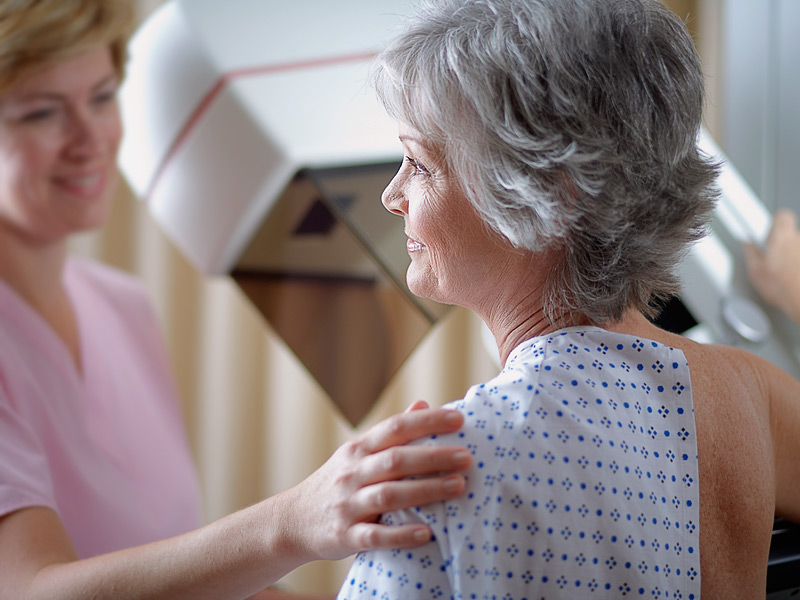Getting a diagnosis of breast cancer is traumatic regardless of the age of the patient. However, given that the likelihood of developing breast cancer increases as a person ages, elderly women (and men) should be aware that the costs of treatment can vary by tens of thousands of dollars. It is important to comparison shop in a timely way, if possible, before committing to a treatment. Likewise, it is crucial for the elderly to have some sort of coverage to pick up what Medicare does not cover.
Risk of breast cancer increases with age
Statistics have long shown that, controlling for factors such as diet, tobacco use, and other risk factors, a person’s chances of developing cancer increase with age. There are many theories as to why this is so. One such theory states that mutations in DNA over time give rise to cancer cells. Caregivers of elderly loved ones should be aware that elderly persons are at risk for developing breast cancer.
To this end, caregivers should take proactive steps to educate themselves regarding various cancer treatments and methods of payment. Being financially prepared for a cancer diagnosis can free a patient to focus on treatment and recovery.
Predicting the cost of treating breast cancer
Caregivers may be wondering if there is any way to predict the cost of breast cancer treatment. Sadly, the answer appears to be that the cost of treatment can vary widely. This is true even for the same types of cancer and the same treatment methods. What’s more, it is not always true that the most effective or least disruptive treatments are the most expensive ones. On the contrary, some of the treatment regimens that work the best, with the least amount of side effects such as nausea and hair loss, are among the cheapest available.
One would expect to see some variations in cost between different forms of breast cancer or different treatment regimens. Yet the fact that costs can vary widely even when all other factors are constant can lead to a great deal of frustration. The unpredictability is due to a few factors, including different insurance plans, different accounting methods, and so on. Yet one thing is clear. Simply reading about general costs of procedures does not predict the cost of diagnosis and treatment for specific elderly patients.
Medicare does not cover everything
Medicare is a wonderful tool that provides invaluable assistance to many elderly patients. Yet it simply does not cover all of the expenses that an elderly breast cancer victim can incur. A full exploration of what Medicare does and does not cover is beyond the scope of this article. However, it is known that many Medicare programs require patients to pay significant out-of-pocket costs.
For example, many patients covered by Medicare must pay 20% of all medical bills. If the person ncurs bills totaling $200,000–an amount which is not unheard of in the realm of breast cancer treatment–that would mean that he or she would owe $40,000. Of course, different Medicare options have different features, such as an absolute cap on out-of-pocket costs. Yet even in a best case scenario a Medicare patient may owe at least several thousand dollars.
Caregivers can take steps to protect their elderly loved ones
Fortunately, caregivers can help protect the finances of their elderly loved ones in the event of a cancer diagnosis. The first thing is to become familiar with the various treatment options covered by an elderly loved one’s insurance plan.
Although it is not possible to predict the cost of treating breast cancer (or any other type of cancer), caregivers can position themselves as advocates for their elderly loved ones. They may steer their loved ones towards the most effective and affordable treatment options available. This in turn will help minimize the trauma (both physical and financial) of a breast cancer diagnosis.
Supplemental insurance is another crucial consideration. There are several insurance plans available to assist elderly patients with expenses Medicare does not pay. Caregivers should help elderly loved ones investigate these plans and come up with the best array of policies. This will help minimize the out-of-pocket costs of breast cancer treatment in the unfortunate event that it becomes necessary.
By being proactive, caretakers can act today to help protect their elderly loved ones tomorrow.
Sources
Bluethmann, S., Mariotto, A., Rowland, J. (July, 2016). Anticipating the “Silver Tsunami”: Prevalence Trajectories and Comorbidity Burden among Older Cancer Survivors in the United States. American Association for Cancer Research. Available at http://cebp.aacrjournals.org/content/25/7/1029.full. Last visited October 12, 2016.
University of Texas M. D. Anderson Cancer Center. (June 4, 2016). Significant cost differences between breast cancer chemotherapy regimens: Informed choice of chemotherapy could impact costs of breast cancer care by $1 billion annually. ScienceDaily. Available at https://www.sciencedaily.com/releases/2016/06/160604214405.htm. Last visited October 12, 2016.
